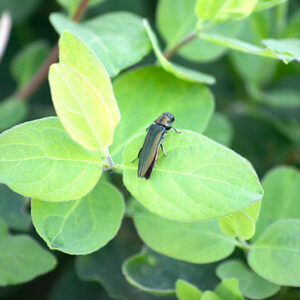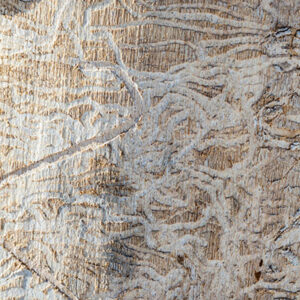What Is Destroying the Lancaster Area's Ash Trees?
One of the most essential beings on our planet, they provide shade, sound-proofing, filter air pollution, create privacy, increase our home value and produce oxygen. The trees on your Lancaster area property are a vital component of your landscape, but like grass, they too can suffer from various diseases and attacks by pesky insects. One such critter is an invasive beetle destroying the Pennsylvania ash tree at an alarming rate. What is this menacing creature, and how can you prevent it from wreaking havoc on your ash trees?
What is Emerald Ash Borer?

The Emerald ash borer beetle (EAB) is a tiny wood-boring beetle covered in metallic green. Only 1/2 of an inch long and 1/8 of an inch wide, it was first discovered in the Detroit area in 2002 and thought to have been brought over from Asia. It was first discovered in PA in 2002. As their name suggests, the emerald ash borer beetle feeds exclusively on ash trees. While the adults are not harmful, the young larvae feed on the bark of the ash tree and involuntarily chew through the tree’s water and nutrient-carrying tissues. Doing so prohibits the spread of water and vital nutrients throughout the rest of the tree. If there is enough of an infestation, the rest of the tree will suffer, and within three to five years, the tree will die.
Why Is This Such a Problem?
The emerald ash tree is a beautiful, statuesque deciduous tree. Providing us with a colorful palette in the fall, it is a valuable resource used to make various tools, handles, baseball, softball bats, and boat bows. Ash trees provide shelter for a variety of butterflies, moths, and birds, including wood duck, pine grosbeak, purple finch, bobwhite, and fox squirrels. With EAB already destroying hundreds of ash trees in North America, it has already cost municipalities, nurseries, property owners, and the forest industry hundreds of millions of dollars. If you’re a home or business owner in the Lancaster area, there are specific symptoms and signs you can look for.
Signs and Symptoms of Emerald Ash Borer
Canopy Thinning and Crown Dieback
Because the young larvae feed beneath the bark, one of the first symptoms that appear is dead and thinned-out branches. Keep in mind this can be a symptom of other diseases as well so it’s important to look for other symptoms.
D-Shape Exit Holes
Another symptom of EAB is the presence of D-shaped holes in the bark. When trees are stressed, they may try to grow new branches and leaves wherever possible. Stressed ash trees may have new growth at the base of the trunk or on the main branches.
S-Shaped Galleries & Splitting Bark –
Trees attacked by EAB have distinct S-shaped or tunnels beneath the bark. They are approximately 1/8 inch wide and packed with a mixture of sawdust and insect excrement.
Epicormic Sprouting
As EAB larvae feed, trees attempt to create callus tissue around larval galleries, which cause the bark to split vertically.
Woodpecker Sightings
Woodpeckers tend to feed on the larvae and pupa of infected ash trees, so if there is an unusual amount of woodpecker activity around your trees, this may be a cause for concern.

Is There Anything I Can Do To Protect The Ash Trees on My Lancaster Property?
- Know the signs of an EAB infestation and watch all ash trees on your property
- Only buy and burn local firewood
- Do not move firewood
Because most EAB beetles attack stressed or injured trees, it’s important to continue a tree and shrub care maintenance regime. Healthy trees in Lancaster are better able to resist these and all other insects.
Provide Your Trees With the Best Care Through Showcase Lawn Works Tree and Shrub Care Service
The healthier and more robust the tree, the less susceptible they are to diseases and insect infestations such as the emerald ash borer beetle. Therefore, your first and best line of defense against any tree disease or pest is to invest in a highly effective tree and shrub care program such as the one the professionals at Showcase Lawn Works provide. Our tree and shrub care program offers six different visits spaced out accordingly. Not only do we feed your trees and shrubs with the fertilizer needed to stay healthy, but we also inspect and treat diseases. We continue to check for insects and conditions throughout the season; therefore, with our tree and shrub care program by your side, you will never have to worry about whether or not your ash trees are infected.
Learn more about our tree and shrub care program by visiting our website now. You can contact us online using our online form or give us a call at 717-354-3226.
For more informative articles regarding lawn care, tree and shrub care, landscaping, and pest control follow our monthly blog. And don’t forget to check us out and like us on Facebook.